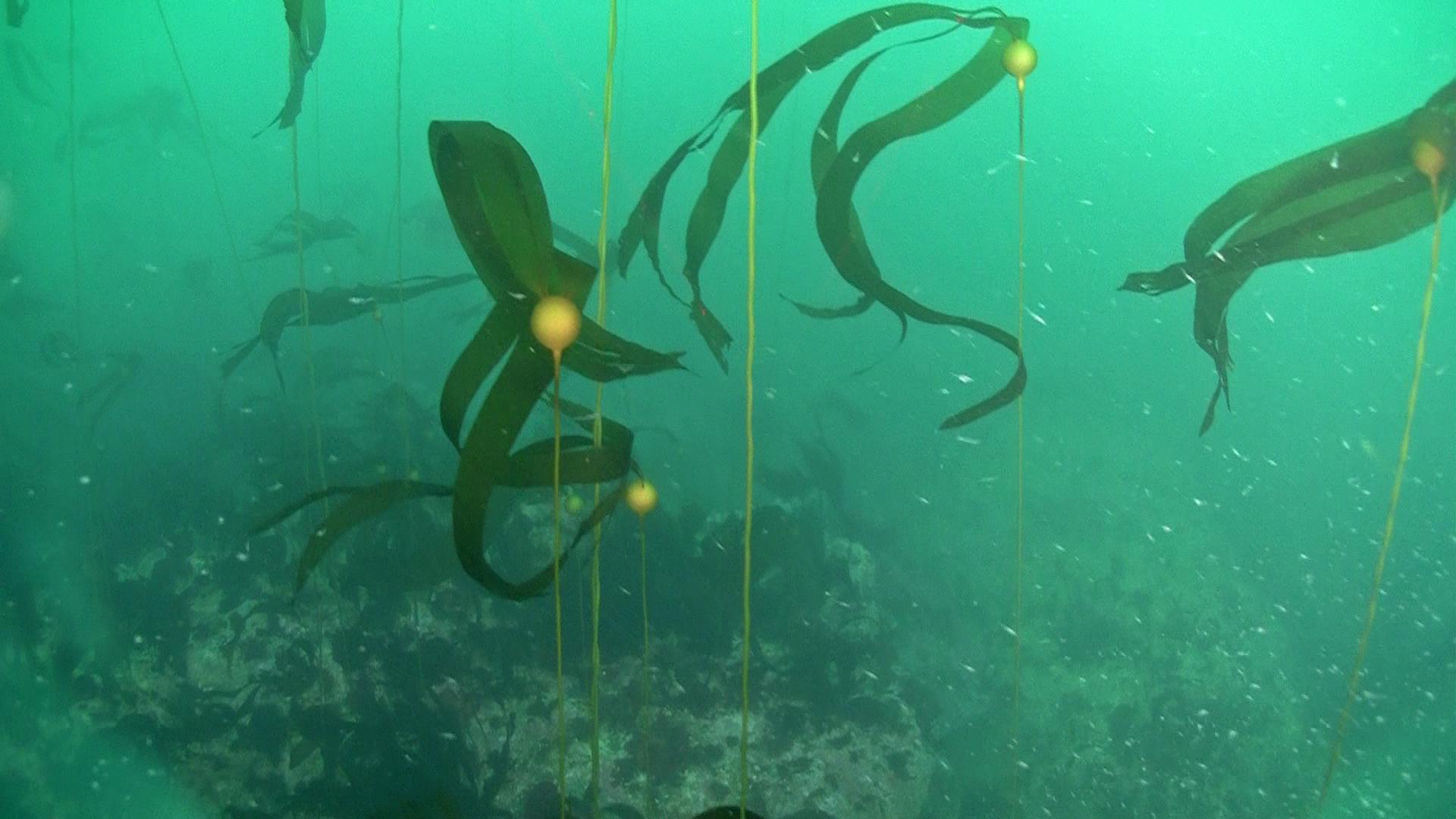When you look offshore from the overlook at Devil’s Punchbowl you may see forests of bull kelp, a type of long, rubbery seaweed, swaying with the water. Bull kelp anchors to the rocky bottom with holdfasts and rises to the surface where its gas bladders, or air-filled bulbs, float. Leaf-like blades extend from these bulbs, forming a dense canopy of kelp at the ocean’s surface. Otter Rock Marine Reserve has patches of kelp forests so dense that they are easily visible from above the water. These highly productive plants can grow as fast as 10 inches per day.
Kelp is considered a foundation species in marine ecosystems. Much like trees in a forest, kelp provides 3D habitat and structure for many different organisms. In kelp forests, you can find many species of fish and plankton, as well as foraging seals and seabirds. Gray whales also come to feed on tiny shrimp living in Otter Rock Marine Reserve’s kelp forests. These forests provide a protected nursery for many eggs and young. They are essential to supporting healthy populations for many economically important species, such as rockfish. Kelp is also an excellent source of food for many species both underwater and on shore.
Kelp can provide climate resilience and coastline protection. This seaweed captures carbon from the atmosphere and absorbs excess nutrients from the water. Kelp forests can also provide natural protection against coastal flooding by absorbing energy from large ocean waves.

(Photo credit: Oregon Department of Fish and Wildlife)
Despite the potential for kelp forests to thrive in Oregon’s cold and nutrient-rich waters, scientists are observing a patchy but alarming decline of kelp along the West Coast. While Otter Rock Marine Reserve is home to one of the most robust kelp forests in Oregon’s nearshore, only portions remain of its former abundance. Our kelp forests have experienced the “perfect storm” of environmental stressors, from a population increase of local kelp-eating purple sea urchins to changing ocean conditions.
Historically, sea urchin populations were balanced by sea stars and sea otters who fed upon them. However, in the early 1900s, sea otters were hunted to extinction, disrupting the delicate ecosystem balance. Over the past ten years, a rise in sea star wasting syndrome greatly reduced local sea star populations. These events resulted in an unchecked boom in sea urchin populations. Without the presence of sea otters and enough sea star populations to keep purple sea urchin numbers in check, kelp forests continue to be at risk of disappearing.
Groups such as the Oregon Kelp Alliance (ORKA) and the Elakha Alliance are working to restore balance to our ecosystem. ORKA is leading the way in kelp conservation efforts by closely monitoring changes in kelp abundance through aerial and underwater surveys. They conduct sea urchin removals in targeted areas to help create environments for new kelp to grow. ORKA relies on local coastal communities to help carry out their restoration projects. The Elakha Alliance is a nonprofit group working to reintroduce sea otters in Oregon’s coastal ecosystem. The return of this essential keystone species would help keep urchin populations in check and allow kelp forests to rebound.